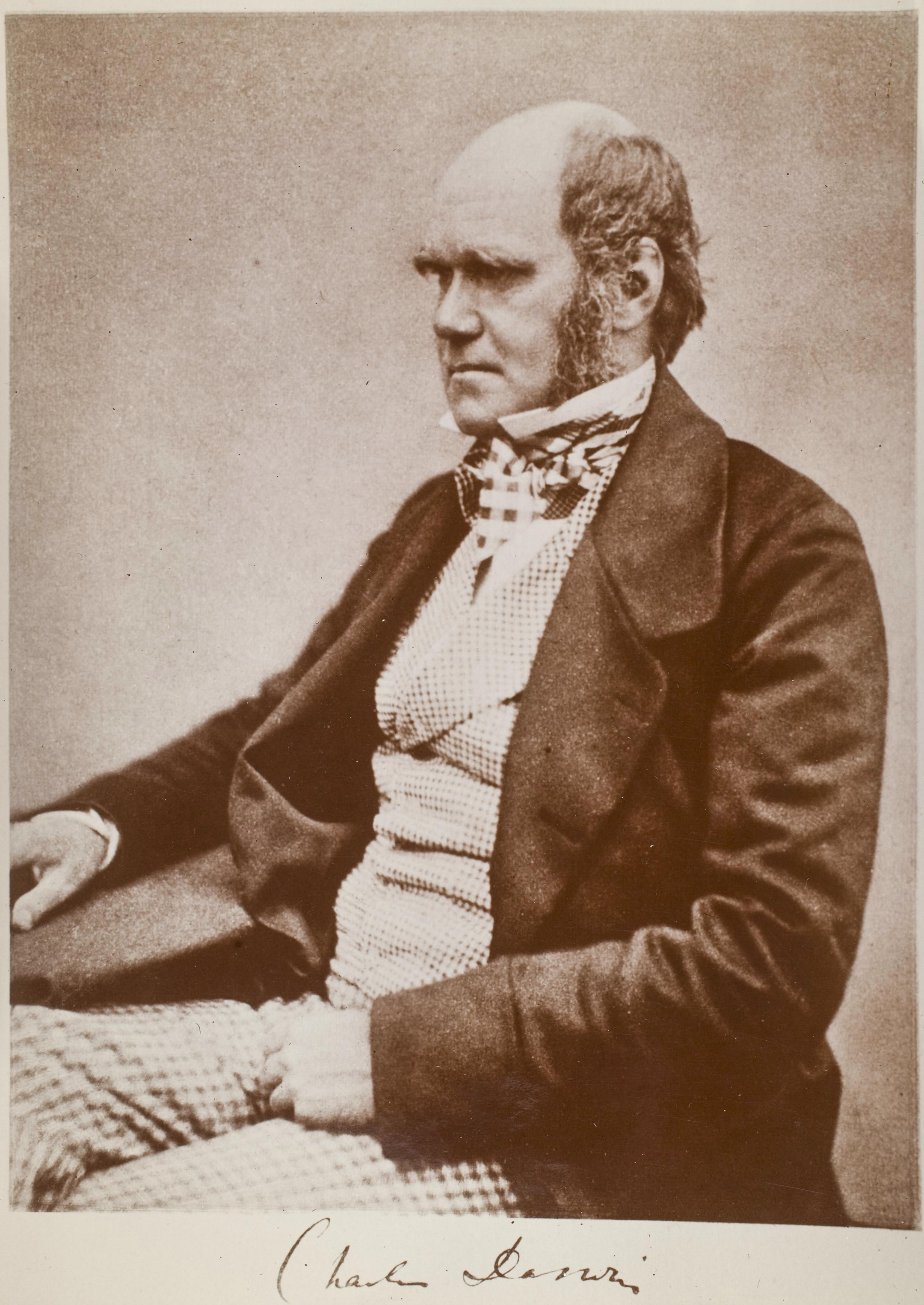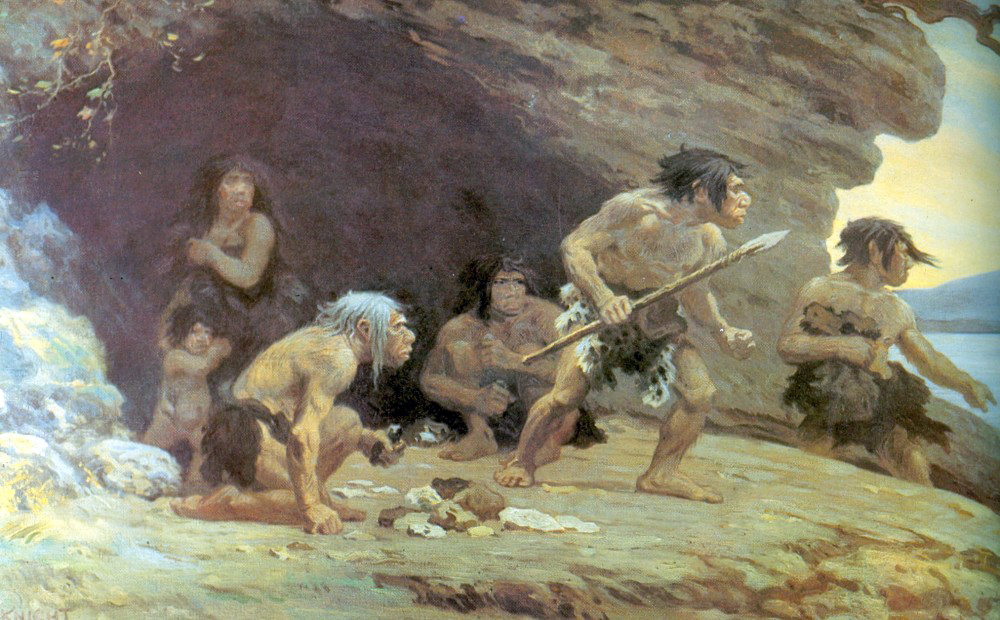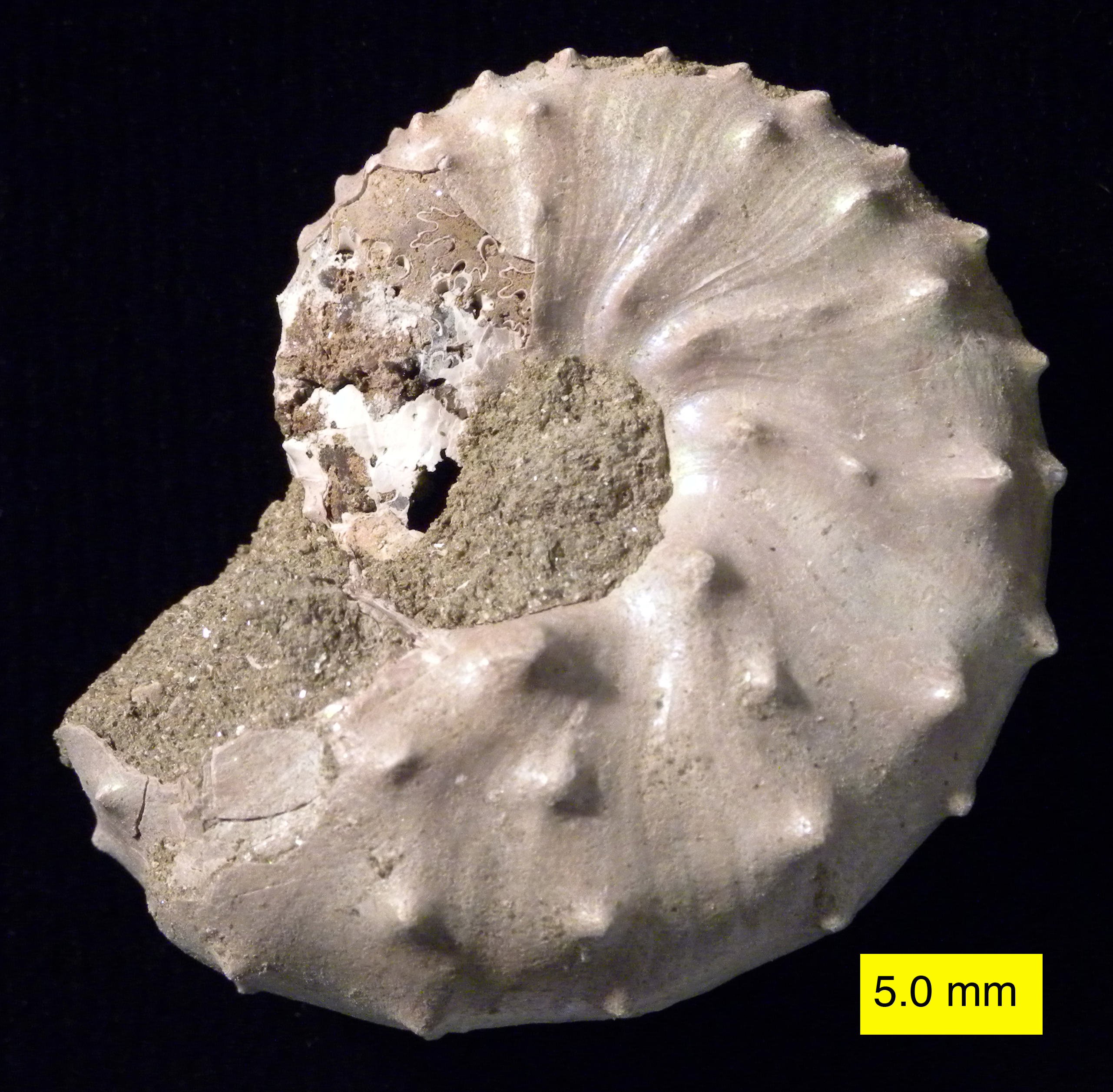|
A Clockwork Origin
"A Clockwork Origin" is the ninth episode in the sixth season of the American animated television series ''Futurama'', and the 97th episode of the series overall. It aired on Comedy Central on August 12, 2010. In the episode, Professor Farnsworth leaves Earth after being frustrated by anti-evolutionists' belief in "Creaturism", a form of Creationism. He and the Planet Express crew arrive at a lifeless planet and the Professor introduces nanobots into the environment. The nanobots rapidly begin evolving into mechanical organisms, allowing the crew to witness a whole new evolutionary history that unfolds before their eyes. The episode was written by Dan Vebber and directed by Dwayne Carey-Hill and received mostly mixed reviews from critics. Plot Professor Farnsworth finds himself arguing with Dr. Banjo, a hyper-intelligent orangutan who believes in "Creaturism", a form of creationism. In an attempt to prove evolution did occur, the Professor excavates the lost missing link, wh ... [...More Info...] [...Related Items...] OR: [Wikipedia] [Google] [Baidu] |
Dwayne Carey-Hill
Dwayne Carey-Hill is an American animation director who is currently Supervising Director of the Netflix series, ''Disenchantment''. Prior to ''Disenchantment'', he was a director on '' Futurama'', Comedy Central series ''Drawn Together''Trumpy's Rhapsody ''Tarantula''Clash-O-Rama! anCoffin Dodgers He also worked for '' Sit Down, Shut Up'', an animated remake of the 2003 Australian show of the same name. He was director on the animated TV series of ''Napoleon Dynamite''. Additionally, he directed '' Futurama: Bender's Big Score'' and '' Futurama: Bender's Game''. Directing credits ''Disenchantment'' Bean Falls Apart"The Goo-Bye Girl""Spy Vs. Spy Vs. Spy""The Unbearable Lightning of Bean""What to Expect When You're Expecting Parasites""The Pitter-Patter of Little Feet""Goon Baby Goon""The Cabinet of Dr. Chazzzzz""The Good, The Bad, and the Bum-Bum""Love Is Hell""Bad Moon Rising""Stairway to Hell""A Princess, an Elf, and a Demon Walk Into a Bar"h2> Trumpy's Rhapsody' ''Tarantula'' ... [...More Info...] [...Related Items...] OR: [Wikipedia] [Google] [Baidu] |
Elasmosaurus
''Elasmosaurus'' (;) is a genus of plesiosaur that lived in North America during the Campanian stage of the Late Cretaceous period, about 80.5million years ago. The first specimen was discovered in 1867 near Fort Wallace, Kansas, US, and was sent to the American paleontologist Edward Drinker Cope, who named it ''E.platyurus'' in 1868. The generic name means "thin-plate reptile", and the specific name means "flat-tailed". Cope originally reconstructed the skeleton of ''Elasmosaurus'' with the skull at the end of the tail, an error which was made light of by the paleontologist Othniel Charles Marsh, and became part of their "Bone Wars" rivalry. Only one incomplete ''Elasmosaurus'' skeleton is definitely known, consisting of a fragmentary skull, the spine, and the pectoral and pelvic girdles, and a single species is recognized today; other species are now considered invalid or have been moved to other genera. Measuring in length and in body mass, ''Elasmosaurus'' would have ha ... [...More Info...] [...Related Items...] OR: [Wikipedia] [Google] [Baidu] |
On The Origin Of Species
''On the Origin of Species'' (or, more completely, ''On the Origin of Species by Means of Natural Selection, or the Preservation of Favoured Races in the Struggle for Life''),The book's full original title was ''On the Origin of Species by Means of Natural Selection, or the Preservation of Favoured Races in the Struggle for Life''. In the 1872 sixth edition, "On" was omitted, so the full title is ''The origin of species by means of natural selection, or the preservation of favoured races in the struggle for life.'' This edition is usually known as ''The Origin of Species.'' The 6th is Darwin's final edition; there were minor modifications in the text of certain subsequent issues. See Freeman, R. B. In Van Wyhe, John, ed. ''Darwin Online: On the Origin of Species'', 2002. published on 24 November 1859, is a work of scientific literature by Charles Darwin that is considered to be the foundation of evolutionary biology. Darwin's book introduced the scientific theory that populatio ... [...More Info...] [...Related Items...] OR: [Wikipedia] [Google] [Baidu] |
A Clockwork Orange (novel)
''A Clockwork Orange'' is a dystopian satirical black comedy novel by English writer Anthony Burgess, published in 1962. It is set in a near-future society that has a youth subculture of extreme violence. The teenage protagonist, Alex, narrates his violent exploits and his experiences with state authorities intent on reforming him. The book is partially written in a Russian-influenced argot called "Nadsat", which takes its name from the Russian suffix that is equivalent to '-teen' in English. According to Burgess, it was a ''jeu d'esprit'' written in just three weeks. In 2005, ''A Clockwork Orange'' was included on ''Time'' magazine's list of the 100 best English-language novels written since 1923, and it was named by Modern Library and its readers as one of the 100 best English-language novels of the 20th century. The original manuscript of the book has been kept at McMaster University's William Ready Division of Archives and Research Collections in Hamilton, Ontario, Cana ... [...More Info...] [...Related Items...] OR: [Wikipedia] [Google] [Baidu] |
Theistic Evolution
Theistic evolution (also known as theistic evolutionism or God-guided evolution) is a theological view that God creates through laws of nature. Its religious teachings are fully compatible with the findings of modern science, including biological evolution. Theistic evolution is not in itself a scientific theory, but includes a range of views about how science relates to religious beliefs and the extent to which God intervenes. It rejects creationist doctrines of special creation, but can include beliefs such as creation of the human soul. Modern theistic evolution accepts the general scientific consensus on the age of the Earth, the age of the universe, the Big Bang, the origin of the Solar System, the origin of life, and evolution. Supporters of theistic evolution generally attempt to harmonize evolutionary thought with belief in God, rejecting the conflict thesis regarding the relationship between religion and science; they hold that religious teachings about creation and scie ... [...More Info...] [...Related Items...] OR: [Wikipedia] [Google] [Baidu] |
Higher Consciousness
Higher consciousness is the consciousness of God or, in the words of Dawn DeVries, "the part of the human mind that is capable of transcending animal instincts". While the concept has ancient roots, it was significantly developed in German idealism, and is a central notion in contemporary popular spirituality, including the New Age movement. Philosophy Fichte Johann Gottlieb Fichte (1762–1814) was one of the founding figures of German idealism, which developed from the theoretical and ethical writings of Immanuel Kant. His philosophy forms a bridge between the ideas of Kant and those of the German idealist Georg Wilhelm Friedrich Hegel. Fichte distinguished the finite or empirical ego from the pure or infinite ego. The activity of this "pure ego" can be discovered by a "higher intuition". According to Michael Whiteman, Fichte's philosophical system "is a remarkable western formulation of eastern mystical teachings (of Advaita)." Schopenhauer In 1812, Arthur Schopenhauer s ... [...More Info...] [...Related Items...] OR: [Wikipedia] [Google] [Baidu] |
Transcendence (religion)
In religion, transcendence is the aspect of a deity's nature and power that is completely independent of the material universe, beyond all known physical laws. This is contrasted with immanence, where a god is said to be fully present in the physical world and thus accessible to creatures in various ways. In religious experience, transcendence is a state of being that has overcome the limitations of physical existence, and by some definitions, has also become independent of it. This is typically manifested in prayer, rituals, meditation, psychedelics and paranormal "visions". It is affirmed in various religious traditions' concept of the divine, which contrasts with the notion of a god (or, the Absolute) that exists exclusively in the physical order (immanentism), or is indistinguishable from it (pantheism). Transcendence can be attributed to the divine not only in its being, but also in its knowledge. Thus, a god may transcend both the universe and knowledge (is beyond the ... [...More Info...] [...Related Items...] OR: [Wikipedia] [Google] [Baidu] |
Incorporeal
Incorporeality is "the state or quality of being incorporeal or bodiless; immateriality; incorporealism." Incorporeal (Greek: ἀσώματος) means "Not composed of matter; having no material existence." Incorporeality is a quality of souls, spirits, and God in many religions, including the currently major denominations and schools of Islam, Christianity and Judaism. In ancient philosophy, any attenuated "thin" matter such as air, aether, fire or light was considered incorporeal. The ancient Greeks believed air, as opposed to solid earth, to be incorporeal, in so far as it is less resistant to movement; and the ancient Persians believed fire to be incorporeal in that every soul was said to be produced from it.Priestley, JosephDisquisitions of Matter and Spirit p. 235 In modern philosophy, a distinction between the incorporeal and immaterial is not necessarily maintained: a body is described as incorporeal if it is not made out of matter. In the problem of universa ... [...More Info...] [...Related Items...] OR: [Wikipedia] [Google] [Baidu] |
Caveman
The caveman is a stock character representative of primitive humans in the Paleolithic. The popularization of the type dates to the early 20th century, when Neanderthals were influentially described as " simian" or "ape-like" by Marcellin Boule and Arthur Keith. The term "caveman" has its taxonomic equivalent in the now-obsolete binomial classification of '' Homo troglodytes'' (Linnaeus, 1758). Characteristics Cavemen are typically portrayed as wearing shaggy animal hides, and capable of cave painting like behaviorally modern humans of the last glacial period. They are often shown armed with rocks, cattle bone clubs, spears, or sticks with rocks tied to them, and are portrayed as unintelligent, easily frightened, and aggressive. Popular culture also frequently represents cavemen as living with, or alongside, dinosaurs, even though non-avian dinosaurs became extinct at the end of the Cretaceous period, 66 million years before the emergence of the ''Homo sapiens'' sp ... [...More Info...] [...Related Items...] OR: [Wikipedia] [Google] [Baidu] |
Amy Wong
This article lists the many characters of ''Futurama,'' an American animated science fiction sitcom created by Matt Groening and developed by Groening and David X. Cohen for the Fox Broadcasting Company. The series follows the adventures of a late-20th-century New York City pizza delivery boy, Philip J. Fry, who, after being unwittingly cryogenically frozen for one thousand years, finds employment at Planet Express, an interplanetary delivery company in the retro-futuristic 31st century. Along with the employees of Planet Express, ''Futurama'' includes a large array of characters, which include co-workers, media personalities, business owners, extended relatives, townspeople, aliens, and villains. Many of these characters were created for one-time gags, background scenes, or other functions, but later gained expanded roles. Other characters started out as background characters, and have been used to personify new roles later on in the series. The main characters are listed fir ... [...More Info...] [...Related Items...] OR: [Wikipedia] [Google] [Baidu] |
Leela (Futurama)
Turanga Leela is a fictional character from the animated television series ''Futurama''. Leela is spaceship captain, pilot, and head of all aviation services on board the ''Planet Express Ship''. Throughout the series, she has an on-again, off-again relationship with Philip J. Fry, the central character in the series. The character, voiced by Katey Sagal, is named after the ''Turangalîla-Symphonie'' by Olivier Messiaen. She is one of the few characters in the cast to routinely display competence and the ability to command, and routinely saves the rest of the cast from disaster. However, she suffers extreme self-doubt because she has only one eye and grew up as a bullied orphan. She first believes herself an Extraterrestrial life in fiction, alien, but later finds out she is the least-mutated sewerage, sewer mutant (fiction), mutant in the history of 31st-century Earth. Her family (particularly her parents' accent (phonetics), accent and "Outcast (person), outcast" status) p ... [...More Info...] [...Related Items...] OR: [Wikipedia] [Google] [Baidu] |
Cretaceous–Paleogene Extinction Event
The Cretaceous–Paleogene (K–Pg) extinction event (also known as the Cretaceous–Tertiary extinction) was a sudden mass extinction of three-quarters of the plant and animal species on Earth, approximately 66 million years ago. With the exception of some ectothermic species such as sea turtles and crocodilians, no tetrapods weighing more than survived. It marked the end of the Cretaceous Period, and with it the Mesozoic era, while heralding the beginning of the Cenozoic era, which continues to this day. In the geologic record, the K–Pg event is marked by a thin layer of sediment called the K–Pg boundary, which can be found throughout the world in marine and terrestrial rocks. The boundary clay shows unusually high levels of the metal iridium, which is more common in asteroids than in the Earth's crust. As originally proposed in 1980 by a team of scientists led by Luis Alvarez and his son Walter, it is now generally thought that the K–Pg extinction was cause ... [...More Info...] [...Related Items...] OR: [Wikipedia] [Google] [Baidu] |







